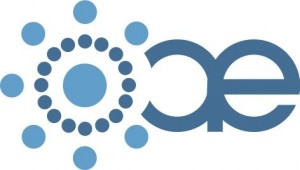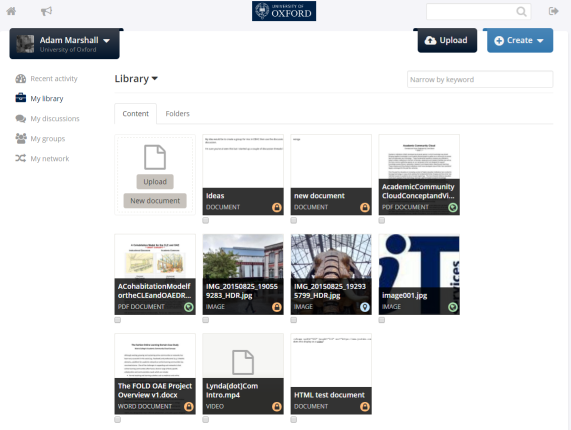 The 2017 version of the annual NMC Horizon Report was launched during the
The 2017 version of the annual NMC Horizon Report was launched during the
final session of this years ELI conference. One of the key themes is “Collaborative Learning Approaches” (see Page 5 of NMC Horizon Report Preview, 2017 Higher Education Edition). This is defined as:
Collaborative learning, which refers to students or educators working together in peer-to-peer or group activities, is based on the perspective that learning is a social construct. The approach involves activities generally focused around four principles: placing the learner at the center, emphasizing interaction, working in groups, and developing solutions to real challenges.
It is not well known that all Oxford University staff and students already have access to a collaborative authoring environment known as *Unity. *Unity is a multi-tenant instance of the Apereo Open Academic Environment (OAE), staff and students can sign-in to OAE with the regular Oxford Single Sign-On credentials.
All UK HEIs plus a huge number of worldwide educational institutions (20,000 in total) also have access to OAE and it is possible to create ad-hoc groups containing just Oxford University staff or students or including members from any of the other participating institutions.
These groups can work together on documents, build up libraries of materials and hyperlinks, have on-line discussions or create networks of colleagues, peers or contacts at other institutions.
You can login by visiting https://ox.oaeproject.org/ or there’s a handy link in the ‘Quick Links’ drop down on every single WebLearn page. OAE works equally well on desktop or mobile.
If you wish to add collaborative exercises as part of a course then we recommend that you add a ‘Web Content’ tool (Site Info > Manage Tools) and set the URL to https://ox.oaeproject.org/. We recommend that you should ask your students to complete their profile upon first login.
We would be very interested in hearing from anybody who intends to try out collaborative authoring in OAE in their teaching.
